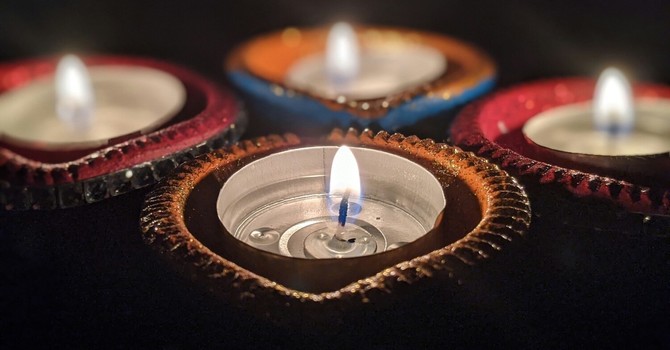
In Canada and the United States, the third week of March is Creative Arts Therapies Week, a time to recognize the role that creative arts play in healing and emotional well-being. As an art therapist , I’ve seen firsthand how various creative arts therapies can help people connect with their emotions, overcome challenges, and express themselves in ways that traditional talk therapy may not always allow. Whether you are seeking therapy for yourself or considering creative arts therapies as part of your organization's client services or staff wellness program, this week is a perfect opportunity to learn more about how these therapies can support mental health.
Creative arts therapies are gaining recognition not only for their effectiveness in clinical settings but also for their potential to support individuals in community programs, schools, and workplaces. Creative arts therapies combine artistic expression with therapeutic techniques, offering a holistic approach that integrates body, mind, and spirit. But what exactly does this involve? Let’s take a closer look at the different types of creative arts therapies and how they can benefit you or your organization.
Art Therapy: Involves the use of visual art materials and techniques (drawing, painting, sculpting, etc.) to help express and process experiences and emotions. The art therapist guides the creative process, offers support, and helps clients reflect on their artwork to foster self-awareness and healing.
Understanding the Benefits of Art Therapy for Mental Health
Music Therapy: Uses singing and/or creating, listening to, or moving to music and sound to express emotions and improve mental health. The music therapist facilitates this process by providing guidance, interpreting responses, and helping clients explore and work through feelings.
Dance/Movement Therapy: Uses body movement to express emotions, improve body awareness, and enhance emotional regulation. The dance/movement therapist supports clients by observing their movements, offering prompts, and helping them connect physical expression with emotional insight.
Drama Therapy: Uses role-playing, improvisation, or storytelling to explore personal issues and emotions through dramatic expression. The drama therapist guides the session, helping clients use theatrical techniques to gain new perspectives, process experiences, and develop coping strategies.
Poetry/Writing Therapy: Uses the written word—journaling, poetry, or storytelling—as a therapeutic tool to express feelings and explore inner thoughts. The poetry/writing therapist provides support by encouraging self-expression, reflecting on the writing, and helping clients uncover deeper meanings in their words.
Play Therapy: Uses toys, games, or creative play to communicate emotions and navigate challenges. The play therapist observes, interacts, and guides the play, helping the client process emotions and develop coping skills.
Expressive Arts Therapy: Combines various creative mediums like art, music, dance, and writing to help clients express themselves and explore emotions. The expressive arts therapist encourages experimentation with different forms of expression, guiding the client through the creative process to foster self-discovery and healing.
Integration of Creative Arts in Therapy
While many therapists are trained and specialize in a specific medium—such as art, music, dance, or play therapy—they may integrate other creative expressions to provide a more comprehensive therapeutic experience and enrich the process. For example, an art therapist might use writing to deepen emotional exploration and a music therapist may incorporate dance or movement to enhance body awareness. This integration of different creative arts allows clients to tap into various forms of expression, fostering deeper self-awareness and expanding therapeutic possibilities.
Why Creative Arts Therapies Matter
One of the key advantages of creative arts therapies is that they offer a non-threatening and non-verbal way to express difficult emotions. For many individuals, traditional talk therapy can feel overwhelming, especially if they struggle to articulate their feelings or experiences. Creative arts therapies provide an alternative outlet for self-expression, which can make it easier for people to engage in the therapeutic process. These therapies are highly versatile and can be adapted to suit the unique developmental and emotional needs of individuals of all ages, including children, adolescents, adults and older adults.
Moreover, creative arts therapies can help individuals work through a wide range of mental health issues including anxiety, depression, stress, trauma, grief and loss, low self-esteem, emotional regulation, life transitions, relationship problems, addiction, chronic illness or pain, and communication difficulties. They offer a holistic approach to mental health by engaging both the mind and body, encouraging personal growth and emotional resilience.
Whether you're an individual seeking new ways to connect with your emotions or an organization looking to incorporate creative arts therapies into your client offerings or staff wellness programs, any of these therapies offer powerful tools for healing, self-expression, and connection.
Integrating Creative Arts Therapies into Your Personal Wellness Journey
If you're looking to explore a holistic and expressive way of enhancing your mental well-being, why not try a creative arts therapy? Creative arts therapies offer a unique path to self-discovery, allowing you to explore your emotions and experiences through art, music, dance, or drama—beyond just words. Whether you're navigating mental health or emotional issues or simply looking for a new way to connect with yourself, creative arts therapies provide a safe, non-judgmental space to unlock personal growth and enhance emotional well-being.
Online Art Therapy for Adults in Ontario
Incorporating Creative Arts Therapies into Your Organization
If you are part of an organization—whether a school, healthcare facility, or workplace—and you’re considering incorporating creative arts therapies into your wellness programs, it’s important to understand the potential benefits. Not only can these therapies promote mental health and emotional well-being, but they can also improve team dynamics, encourage creativity, and help individuals manage stress. Creative arts therapists can tailor their approaches to suit the unique needs of your organization. From offering individual or group therapy sessions to leading workshops, these professionals can help create a supportive environment where creativity fosters emotional resilience.
Art Therapy Services for Community Organizations
Conclusion
Creative Arts Therapies Week provides opportunity to reflect on the transformative impact of the arts in therapy. These creative modalities offer a unique and effective way to address mental health and emotional wellness, benefiting individuals in a variety of settings. Whether you're seeking a new way to connect with your emotions or part of an organization looking to support your clients or staff, creative arts therapies can provide valuable tools for healing, growth, and connection.
If you're interested in learning more about how art therapy specifically can support you or your organization, I’d be happy to connect. As a trained and qualified art therapist, I specialize in helping individuals and groups use creative expression to explore emotions, improve well-being, and foster personal growth.
I have experience working with organizations in diverse settings, including schools, mental health agencies, addiction recovery programs, long-term care facilities, assisted living communities, and other community environments. Together, we can explore how art therapy can be tailored to meet the unique needs of your organization. For individuals, I offer online art therapy for adults across Ontario, making it accessible no matter where you are.
If you found this information helpful, please share it with others who might benefit.
Additional Information & Considerations
Please note that I cannot guarantee the complete accuracy or comprehensiveness of all the details provided. When seeking a creative arts therapist (of any kind), it is important to reasearch or have a discussion with the therapist about what populations they work with, their therapeutic approach and their areas of experience or specialization. It is also essential to check the following:
Where they received their training – Ensure that the therapist has received appropriate training and holds a relevant degree, diploma or certificate in the respective therapy.
Which professional association they belong to – Inquire whether the therapist is a member of a creative arts therapy professional association (e.g., Canadian Art Therapy Association, Music Therapy Association of Canada, etc.).
In provinces where psychotherapy is a controlled act – Although creative arts therapies are not regulated across Canada, psychotherapy is regulated in certain provinces. For example, in Ontario, psychotherapy is considered a controlled act under the Regulated Health Professions Act, 1991. As such, it can only be performed by members of one of six Ontario-based regulatory colleges. To ensure that a creative arts therapist practicing in a province that regulates psychotherapy is authorized to perform this controlled act, verify that they are registered with the appropriate regulatory college.




